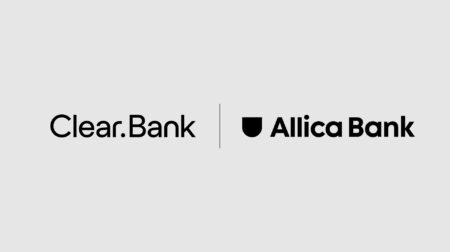An introduction to open banking and open finance

The development of Open Banking in the UK has been heralded as a game-changer for the financial industry. Introduced by the Competition and Markets Authority (CMA) in 2018, it requires banks to allow customers to share their financial data with third-party providers.
It offers a secure and straightforward way to help consumers understand their finances more effectively – from borrowing to savings, from credit scores to switching – and inform their financial decision-making.
Open Banking aims to give customers greater control over their financial data and improve competition among financial service providers. It does this through FCA-regulated third-party providers (TPPs) that are designated as either Account Information Service Providers (AISPs) or Payment Initiation Service Providers (PISPs), which determines the services they can provide:
- AISPs offer account information services (AIS) by gathering read-only financial information. They can compile data from multiple bank accounts, but they can’t initiate activity from those accounts.
- PISPs offer payment initiation services (PIS), allowing them to access and present financial information and move funds between bank accounts with customers’ consent for each payment.
API-based account aggregation is highly secure. It authenticates details with a user’s bank and doesn’t store that information or share it with third parties, reducing the risk of fraud.
With the ability to consent to sharing their data, consumers can compare financial products and services more efficiently and switch to better deals. This creates a more competitive market, which can drive down prices and improve the quality of financial products and services.
Initially, many services focused on combining account and spending data that helped people to manage their finances more effectively. Using personal financial management (PFM) apps, consumers can see all their accounts in one place, track their spending and set budgets. This makes it easier for customers to stay on top of their finances and make more informed decisions.
We’re now seeing firms, for example, Bud, focused on providing more value-added services using this data, augmented with additional sources and tools, to deliver more predictive and analytical tools for banks and fintech firms. More recently, Apple announced AIS-based connectivity for its Wallet app, displaying current account balances across a user's connected bank accounts and payment and deposit history. It will also show account balances to users when using Apple Pay for purchases, providing additional detail on available funds before completing a payment that could, for example, push them into their overdraft and incur additional charges.
While AIS has been central to the first phase of Open Banking, the growth of PIS has seen it become an alternative payment method. According to the latest report and statistics from Open Banking Limited, the independent entity established by the Competition and Markets Authority (CMA) to oversee its implementation, Open Banking has more than 7 million users and contributes over £4 billion to the UK economy.
Open banking payments move money directly from the payer’s bank account to the receivers over the UK’s Faster Payments (FPS) scheme without using a third-party network such as Visa. As a result, they can offer lower transaction costs for merchants compared to existing payment methods.
The use of PIS has evolved from credit card repayments and single, one-off payments to now being embedded in user journeys across financial services and, increasingly, e-commerce, utilities and government services.
Open Banking Limited statistics show an acceleration in consumer adoption, with the first six months of 2023 seeing double the volume of payments compared with the first six months of 2022. One of the major drivers for this is the UK’s HM Revenue and Customs (HMRC), which processed £2.3bn of payments using open banking in January alone ahead of the tax self-assessment deadline. That growth has continued with a record 9.7m payments made in June 2023, an increase of 88% on the same month in 2022, with an average transaction value of around £450 (compared to £34 for a debit card and £53.60 for a credit card).
With instant verification, consumers can make payments quickly without the need to enter card details or log into other systems. As a result, it has the security benefits of traditional bank transfers, married to an improved user experience. Open Banking payments have Secure Customer Authentication (SCA) embedded by design, such as using biometric methods including fingerprint or Face ID to authorise each payment.
As a result, Payment Service Providers (PSPs) and merchants can offer consumers a secure payment option that protects sensitive financial information and reduces the risk of fraud and chargebacks. In addition, PIS can help businesses streamline their operations by automating payment processing and reconciliation and enabling them to free up resources to focus on other areas of their operations.
We see many of our fintech clients, such as Chip, embracing open banking to make the account funding experience faster, smoother and more secure. We also see TPP clients such as TrueLayer seeing significant growth as more merchants look to implement PIS-based payments at the checkout and closed-loop payments using Open Banking, which can support more efficient refund and withdrawal processes.
With greater convenience, security and cost savings, it's no wonder that more businesses are beginning to offer this payment option to their customers. This growth is likely to be boosted further by the implementation of Variable Recurring Payments (VRP). This offers “me-to-me payments,” sweeping is the automatic transfer of money between two accounts owned by the same person, for example, a bank account and a savings account. They are a faster, cheaper and more efficient option compared to cards and Direct Debits, and because they use open banking to settle transactions in seconds, merchants can see the funds and manage cash flow more effectively.
VRP has the potential to go beyond ‘me-to-me’ payments and into the realm of ‘me-to-business’ payments, such as subscriptions, memberships and utility bills. If that occurs, a new set of businesses could utilise open banking, leading to further consumer adoption. However, these ‘non-sweeping’ use cases are not mandated by the current regulation, leading to concerns that each CMA9 bank could take its own approach. The lack of mandate also means the onus is on each TPP to sign a commercial contract with each Account Servicing Payment Service Provider (ASPSP), creating another layer of complexity.
By giving customers greater control over their financial data and creating an alternative payment method, it has improved choice, reduced costs and increased security for consumers. As more people become aware of the benefits of open banking, it is likely to become even more popular and widely used in the future.
However, it will still require regulatory changes to overcome some of the hurdles seen in the UK and across the EU. In June of this year, the EU Commission unveiled a series of proposals for the Payment Services Directive 3 (‘PSD3’) and the Payment Services Regulation (‘PSR1’) intended to modernise and harmonise the existing payments regulatory framework. PSR1 (previously known as PSD2) should lead to a more harmonised payments market, with significantly fewer differences and inequalities between member states, providing a further boost to open banking-based payments.
The next evolution will be towards what is termed open finance. Open finance should give consumers and businesses greater control over, and visibility into, their financial lives by bringing the benefits of open banking to a broader array of financial products, including savings, loans and pensions.
That, in turn, will unlock new use cases and will likely see new fintech firms emerge using open finance foundations to deliver various new services. At ClearBank, we’re excited by this evolution and look forward to collaborating with more firms as they embrace open banking and, ultimately, open finance.
Simon Lam is Head of Fintech at ClearBank, responsible for driving growth within the fast-growing sector for the bank. He has over a decade of experience in financial services, having started his career at UBS before moving to J.P. Morgan working in Cash Management Sales. Simon joined ClearBank in 2019 as Senior Relationship Manager before being appointed to his current role in early 2023.


